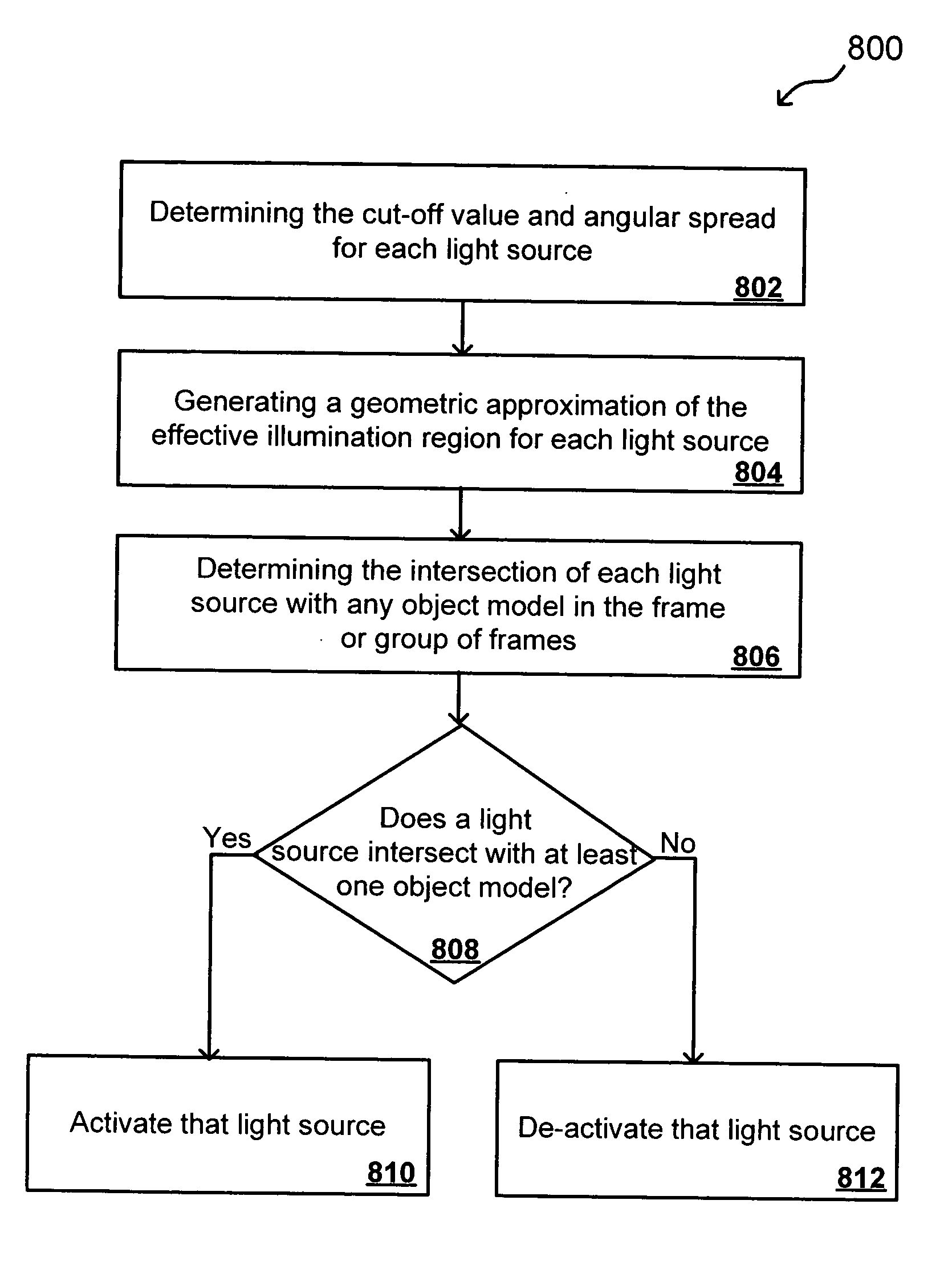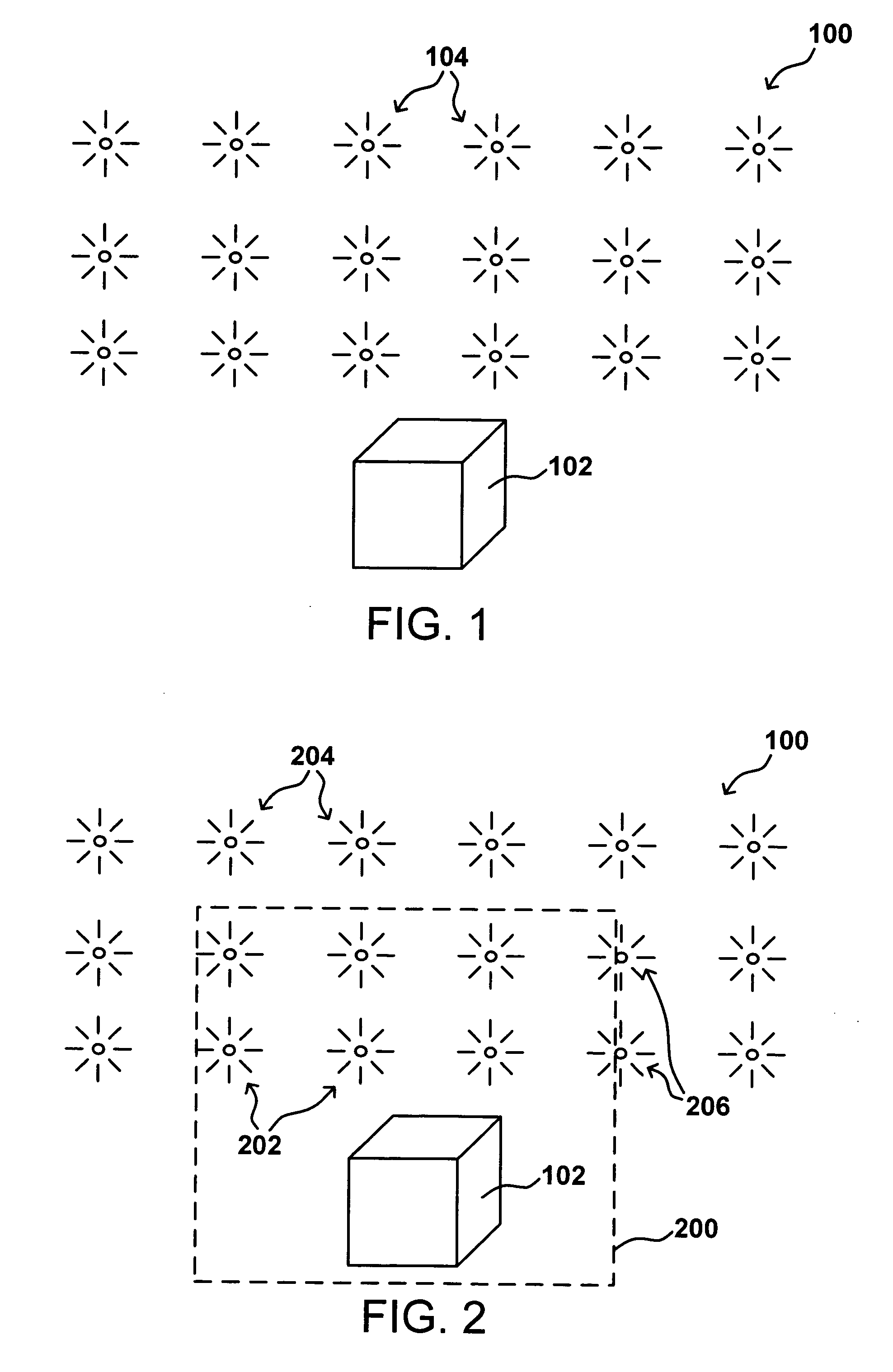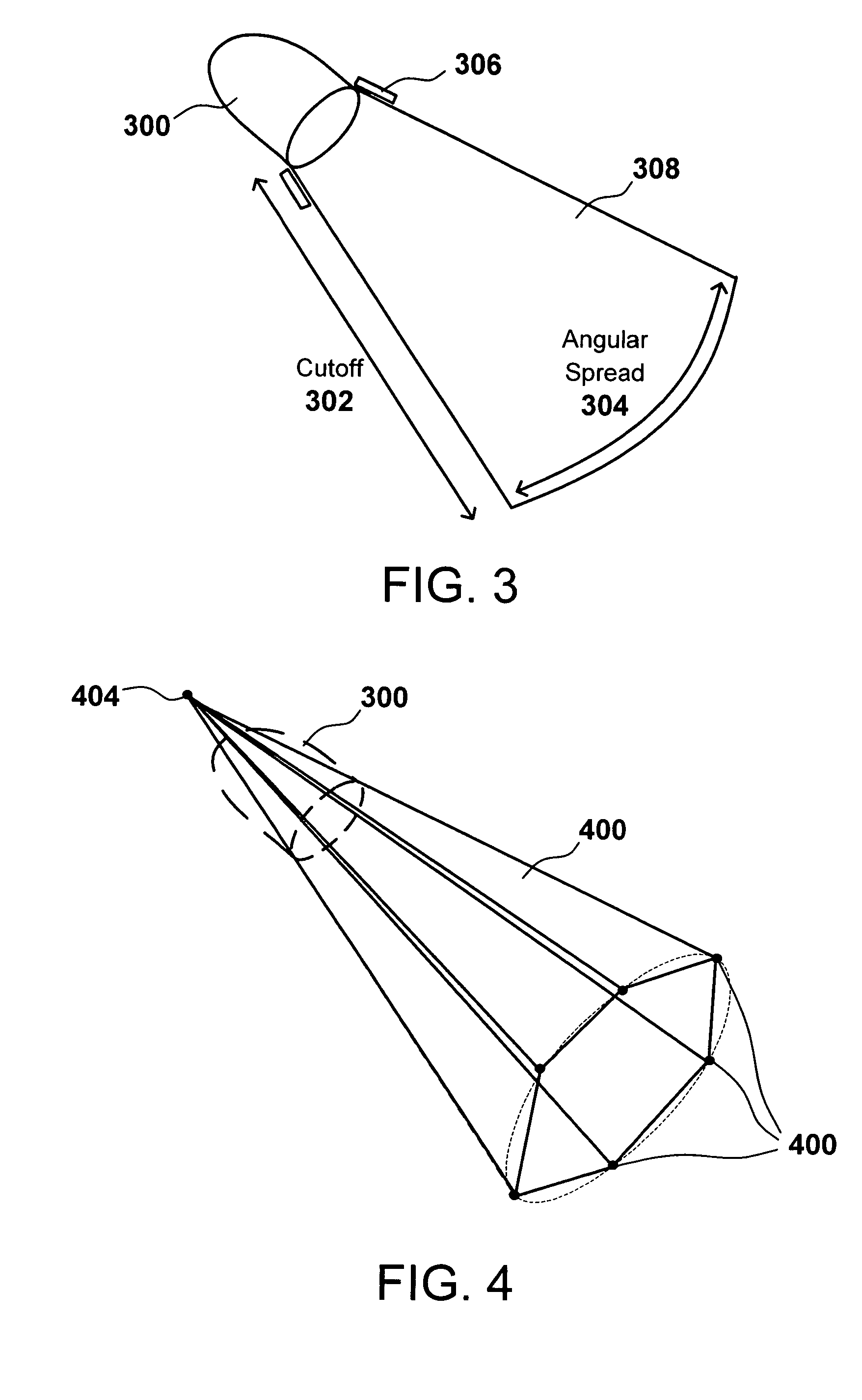Systems and methods for light pruning
a technology of system and method, applied in the field of computer graphics, can solve the problems of large data volume, time-consuming and data-intensive analysis of each of the thousands of light sources, and relatively simple functions
- Summary
- Abstract
- Description
- Claims
- Application Information
AI Technical Summary
Benefits of technology
Problems solved by technology
Method used
Image
Examples
Embodiment Construction
[0023] Systems and methods in accordance with various embodiments of the present invention can quickly and automatically remove or deactivate light sources from a frame or shot of animation before the rendering process. Deactivation, for example, can occur during a pre-pass process on the frame(s) to be rendered utilizing existing technology, such as geometry-based culling procedures. De-activating the lights in a pre-pass process not only can save expensive rendering time by reducing the amount of information to be processed in rendering, but also can save time in other pre-rendering steps such as lighting and texture mapping, as fewer objects in a scene have to be considered.
[0024] In one example, FIG. 1 shows a set 100 including various object models to be used for a shot of animation. The set 100 is seen to include a cube 102 and a plurality of light sources 104 useful for lighting the cube. Although the light sources appear to be in a two-dimensional array, it should be unders...
PUM
 Login to View More
Login to View More Abstract
Description
Claims
Application Information
 Login to View More
Login to View More - R&D
- Intellectual Property
- Life Sciences
- Materials
- Tech Scout
- Unparalleled Data Quality
- Higher Quality Content
- 60% Fewer Hallucinations
Browse by: Latest US Patents, China's latest patents, Technical Efficacy Thesaurus, Application Domain, Technology Topic, Popular Technical Reports.
© 2025 PatSnap. All rights reserved.Legal|Privacy policy|Modern Slavery Act Transparency Statement|Sitemap|About US| Contact US: help@patsnap.com



